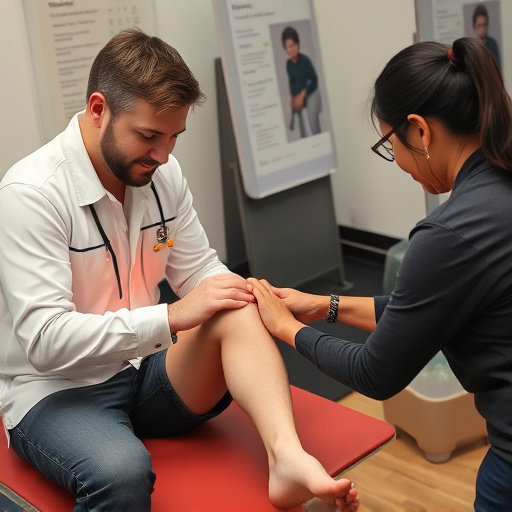Returning to active duty after military injury treatment requires understanding a unique recovery process involving physical and psychological aspects. Specialized therapies, setting realistic goals, adjusting routines, seeking support, and engaging in well-being activities are crucial for successful transition. Patience, celebrating small victories, and effective communication with medical professionals enable service members to adapt to "new normal" and build resilience.
Returning to duty after completing military injury treatment is a significant milestone. This article guides service members through their recovery journey, offering insights into understanding personal healing. We explore practical steps for reintegrating into daily life post-treatment and emphasize building resilience to adapt to a new normal. By addressing these aspects, military personnel can smoothly transition back to their roles, supported by the knowledge that they are stronger than ever before.
- Understanding Your Recovery Journey After Military Injury Treatment
- Reintegrating into Daily Life: Practical Steps Post-Treatment
- Building Resilience and Adjusting to New Normal Post Military Injury Healing
Understanding Your Recovery Journey After Military Injury Treatment

Returning to duty after military injury treatment is a significant milestone, marking the beginning of a recovery journey unique to each service member. Understanding this process is crucial for a successful transition back into active service. The road to recovery often involves both physical and psychological aspects, as healing from a military injury can be a complex endeavor.
Many veterans face challenges such as managing pain, especially common issues like neck pain or lower back pain, which may have developed during their service. Sports injury treatment techniques, including specialized therapies and rehabilitation programs, can play a pivotal role in this recovery journey. These methods aim to restore mobility, reduce pain, and enhance overall well-being, enabling service members to regain strength and confidence. It’s essential to be patient and listen to one’s body as it adapts to healing, ensuring a steady pace that accommodates individual needs.
Reintegrating into Daily Life: Practical Steps Post-Treatment

Reintegrating into daily life after completing military injury treatment can be a challenging yet rewarding process. It requires careful planning and practical steps to adapt to civilian life while managing any lingering physical or mental health issues. The first step is to set realistic goals and expectations for yourself, considering both your capabilities and limitations. This might involve adjusting your activities and routines to accommodate any ongoing treatments or physical therapy sessions, such as incorporating therapeutic exercises into your daily regimen.
Additionally, seeking support from family, friends, or professional networks can make a significant difference in easing this transition. Accessing available resources, including counseling services, vocational rehabilitation programs, and even chiropractic care for joint pain relief, can help you navigate the challenges of returning to work or school. Remember, it’s essential to take things at your own pace, be patient with yourself, and celebrate small victories along the way.
Building Resilience and Adjusting to New Normal Post Military Injury Healing

Returning to duty after completing military injury treatment is a significant milestone for any service member. The journey from healing to full functionality requires building resilience—a strength that goes beyond physical recovery. It involves adjusting to a “new normal,” where certain limitations or differences in abilities may persist. This adaptation process is crucial, as it enables individuals to thrive despite the challenges posed by their military injury treatment.
Resilience is cultivated through a combination of psychological and physiological strategies tailored to each individual’s unique experience. For instance, engaging in activities that promote mental well-being, such as mindfulness or counseling, can help manage stress and anxiety associated with returning to duty. Simultaneously, focusing on muscle recovery and strength training, including exercises specifically targeting areas affected by the military injury treatment (like sports injury treatment for athletes), facilitates a smoother transition back into physical demands of their roles. Effective communication with medical professionals is essential to understand the body’s limits and gradually reintroduce activities, ensuring long-term health and well-being, even in managing persistent conditions like neck pain treatment.
Returning to duty after military injury treatment is a significant milestone, marking a journey of healing and resilience. By understanding your recovery process, taking practical steps to integrate back into daily life, and building mental fortitude for a new normal, you can navigate this transition successfully. Remember, proper support and a proactive mindset are key to a swift and fulfilling return to service. Embrace the challenges as opportunities for growth, and let your strength be a testament to your resilience in the face of military injury treatment.














